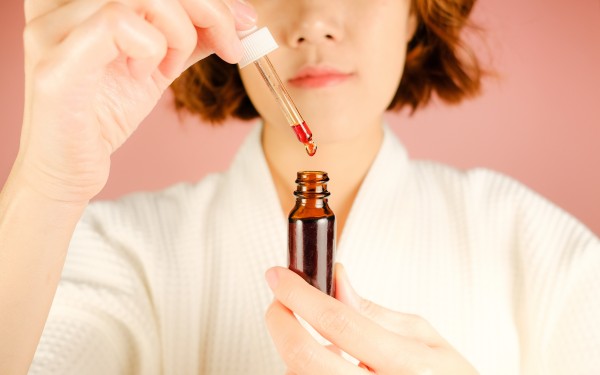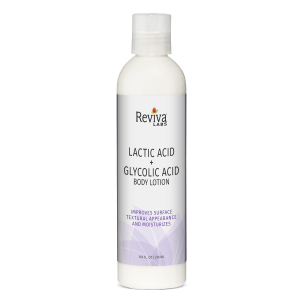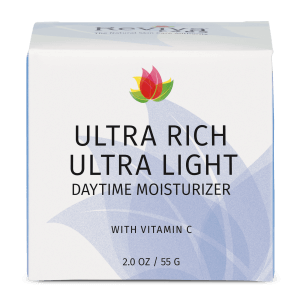Clean Beauty, Ingredients, Skin Care
Have you ever heard of lactic acid and its incredible benefits for your skin?
Lactic acid is a type of Alpha Hydroxy Acid (AHA) that is derived from various sources such as milk, fermented corn starch, beets, and other sugar-rich foods. Synthetic forms of lactic acid are also available. This powerful skincare ingredient has been used for millennium due to its versatility and effectiveness in restoring the skin’s natural balance and improving its appearance.
Legend has it in ancient Egypt, Cleopatra would bathe in sour milk – which you guessed it… is a natural source of lactic acid.
Lactic acid is a great exfoliator
Lactic acid works by exfoliating the skin and breaking down the “glue” that holds dead skin cells together, revealing smoother, brighter, and more even-toned skin. One of the most important benefits of lactic acid is its ability to increase the rate of cell turnover, which is the rate at which the skin replaces old cells with new ones. As we age, this process slows down, which can result in dull-looking skin, and wrinkles. Lactic acid can help to accelerate the rate of cell turnover, which can result in a more youthful-looking skin.
Lactic acid can help collagen production
In addition to exfoliating, lactic acid also helps to stimulate collagen production, which is the protein that gives skin its elasticity and strength. Collagen production decreases with age, and as a result, the skin may become loose and saggy. Lactic acid can help to stimulate collagen production, thereby firming and plumping the skin, giving it a youthful appearance.
Lactic acid is a great humectant
Lactic acid can also hydrate skin. It’s also a very good humectant, which means it helps the skin retain moisture. This is particularly important for those with dry or mature skin, as it can help to plump up fine lines and wrinkles caused by dehydrated skin. In fact, the FDA has approved a lactic acid-containing prescription product called LacHydrin, specifically for the purpose of hydrating the skin.
Lactic acid is great for blemished or damaged skin
Lactic acid also has antibacterial properties, which makes it an effective ingredient in combating acne. When applied to the skin, it helps to reduce the size and appearance of breakouts and blemishes, making it an excellent choice for acne-prone skin. Lactic acid can also be used to fade hyperpigmentation marks caused by things like acne and sun damage, making it an effective treatment for dark spots and uneven skin tone.
Lactic acid is less irritating than other AHAs
One of the advantages of lactic acid, compared to other AHAs such as glycolic acid, is its larger molecular size, which makes it gentler and more suitable for those with sensitive skin. Lactic acid can be found in concentrations of 5-10% in over-the-counter products and up to 50% in the prescription-grade products. Even at higher percentages, it’s still considered to be a gentler form of AHA and is usually well-tolerated, even by those with sensitive skin.
However, as with any skincare product, it is always a good idea to patch test new products to make sure they don’t irritate your skin.
Lactic acid helps the skin’s barrier
Lactic acid also helps to improve the skin’s barrier function, by increasing the production of lipids and ceramides, which are essential components of the skin’s barrier. A healthy barrier function is crucial for maintaining skin hydration, protecting the skin from environmental aggressors, and preventing irritation and dryness.
Lactic acid improves the appearance of pores
Another key benefit of lactic acid is that it can help to reduce the visibility of pores. Enlarged pores can be caused by various factors, such as age, genetics, and oily skin. Lactic acid can help to unclog pores and reduce their appearance by exfoliating the dead skin cells that can accumulate inside the pores.
Lactic acid plays well with other skincare
Using lactic acid in conjunction with other skincare ingredients can also enhance its benefits. It is often used in conjunction with Vitamin C, retinoids, and other antioxidants, which can provide additional benefits to the skin. Vitamin C is a powerful antioxidant that can help to protect the skin from environmental aggressors, reduce the appearance of fine lines and wrinkles, and even out the skin’s tone. Retinoids are also effective in reducing the appearance of fine lines and wrinkles and are also good for preventing breakouts and treating acne.
Lactic acid has a prescriptive strength too
It is also worth mentioning that Lactic acid can also be used as a chemical peel treatment, which is a non-invasive procedure that can be performed in a medical or cosmetic setting. The procedure involves applying a high concentration of lactic acid to the skin. The chemical peel removes the top layers of skin, revealing the new, smoother skin underneath. It can be used to treat fine lines and wrinkles, acne, and age spots.
It’s important to note, that lactic acid peel can cause some side effects such as redness, stinging, and peeling, and that using such high concentrations should be done by a professional in a controlled setting with proper post-treatment care and instructions.
Overall, Lactic acid is a great addition to any skincare routine and can provide a wide range of benefits for the skin, such as exfoliating, moisturizing, stimulating collagen production, and reducing the appearance of fine lines and wrinkles, hyperpigmentation, and acne. Lactic acid is a safe and effective skincare ingredient that can give your skin the boost it needs to look and feel its best. So, if you’re not already using lactic acid in your skincare routine, consider giving it a try and see the difference it can make for your skin.









